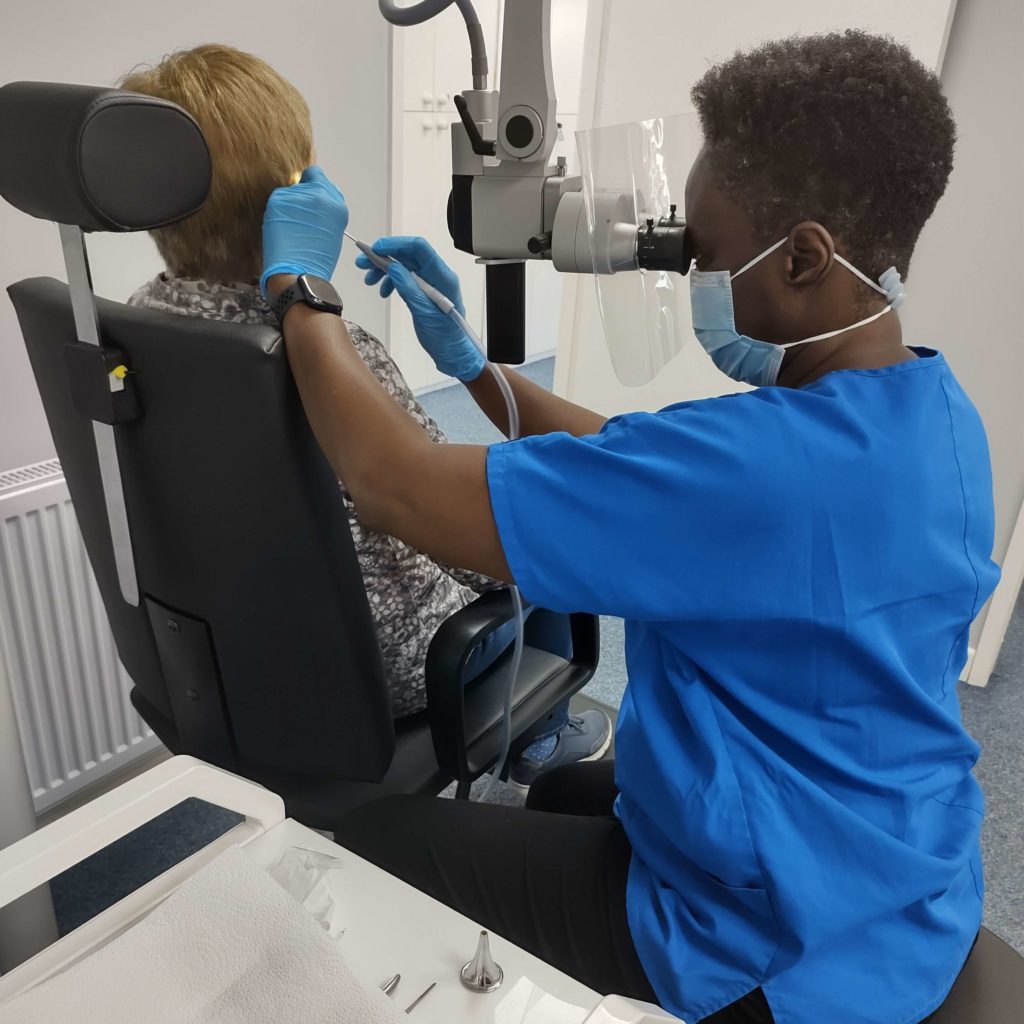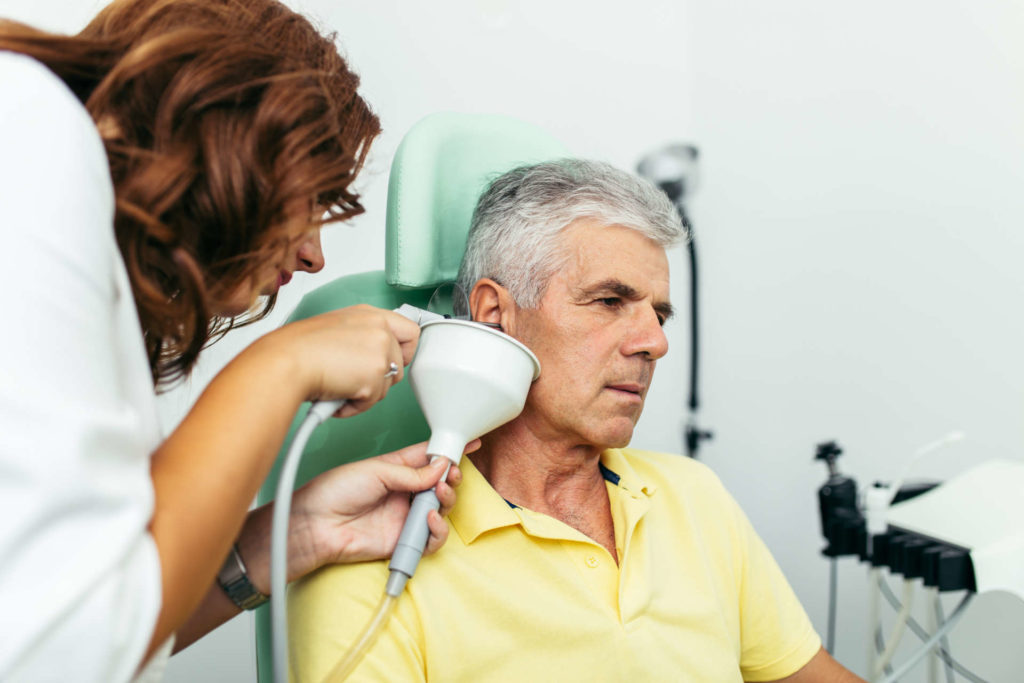Are your ears bothering you?
If your ears have started to hurt, or sounds have become muffled, you may require expert ear wax removal. For the safest, most efficient removal, get your ears checked out by one of our expert audiologists.
Ear wax buildup can happen at any age, and our specialists are here to assist you, or your family members to ensure clear, pain-free hearing.
If you’re not sure if it’s ear wax, hearing loss or you just need to invest in ear plugs, book an appointment and let us help, we provide a whole host of services ensuring your hearing is protected.
Why choose South East Hearing Care Centres?
With over 25 years in the audiology industry, our team are expert when it comes to ear wax removal. We can quickly and easily diagnose and remove wax build-up using the latest technology, microscopes and otoscopes to ensure there is no damage to your hearing.
We have five locations in Bexhill, Chichester, Eastbourne, Horsham and Seaford, and as independent hearing care centres, we can give you the attention you deserve. Our friendly staff have seen it all and will support you all the way through.
If you’d like to book in to have one of our team assess your ears, then get in touch today. You can either contact your local clinic directly or use our online appointment service to book an appointment with our team.
How do you treat earwax buildup?
There are many at-home remedies to remove earwax buildup, all with varying levels of safety. If you suspect you or your family member may have a build-up of ear wax, ensure you seek help from a professional rather than attempting to do it yourself with olive oil or cotton buds.
You can end up doing your ear far more damage this way, so always seek medical, professional help before trying any at-home remedies.
Please note, ear drops can be useful if they are made with a sterile solution and are used as advised by the manufacturer, but sometimes this isn’t enough. Do not use these if you have a perforated eardrum.
There are two clinically approved ways of removing earwax in a safe way; micro suction and irrigation.

Micro suction
This is the preferred and most common method of treatment for medical staff and patients alike, for guaranteed effective and safe removal of ear wax.
This pain-free procedure involves one of our trained audiologists using a microscope to accurately discover the area in your ear which needs micro suction. Then a suction tool will be used to remove any ear wax or debris which is blocking the ear.
The tool works like a vacuum cleaner and quickly and painlessly removes any wax, without using any water, leaving the ear dry, which is the healthiest option. This will take around 20 minutes per ear, so you can even have your ears cleaned during your lunch break if you’re in Bexhill, Chichester, Eastbourne, Horsham or Seaford!
Ear Irrigation
The audiologist will firstly carry out a thorough ear examination, using a video otoscope, and a tiny colour video camera, to see what is happening in the ear canal and at the eardrum. The images will be transferred to a screen so that you can see exactly what is happening.
Once your audiologist has a good visual, they will use a small electronic irrigation device to direct a flow of water into your ear canal. The water is around body temperature and a small amount of pressure is applied which will remove ear wax.

Whilst you may feel some discomfort, this is not a painful procedure and lasts for a short amount of time.
What is ear wax?
Ear wax – or cerumen to give it its medical name – is a normal build-up of dead cells, hair, foreign material such as dust, and natural wax which forms a protective coating on the skin in the ear canal. It provides a form of defence against bacteria, fungal infections and water.
However, your ear can create too much wax and this is when you will need to speak to a specialist to get it removed safely.
Why do I need to have ear wax removed?
One of the main reasons you need to treat earwax buildup is because it is causing symptoms and pain, or muffled hearing.
Other reasons could be that you’re having a hearing test or need impressions for your hearing aids, especially if you are having in-the-ear type hearing aid fitted, then it is important that your ear canal is clear of wax, otherwise, these cannot be fitted.
One reason to have your ear wax removed is if you’re going deep sea diving – seawater may get into the ears behind the wax and not be able to get out, setting up ideal conditions for an ear infection.
How do you know if you have ear wax build up?
Symptoms of wax buildup:
- Earache
- Ringing noises or tinnitus
- A feeling of fullness in the affected ear
- Hearing issues in the affected ear
- Dizziness
If you experience any or all of these symptoms, our experienced team of audiologists will be able to help. We will be able to assess your ear canal and discover whether you need ear wax removal treatment, helping to prevent any infections or permanent damage to your hearing.
What are the benefits of having ear wax removed?
Many people spend their whole lives with perfectly self-cleaning ears and don’t struggle with ear wax buildup, but for others, there can be huge benefits.
These benefits include:
- Healthier ear canals – the cleaner they are, the healthier they are
- Reduced risk of fungal or bacterial infection such as Otomycosis (Singapore Ear), which can cause severe discomfort
- Ability to fit hearing aids – it is not possible to fit in-the-ear hearing aids when the ear canal is blocked with wax
- It may relieve an aching jaw
- It can help deep-sea divers avoid ear infections through ingress of seawater
- It may relieve the symptoms of tinnitus, especially if these are not related to long-term exposure to loud noise
The procedure for ear wax removal is quick and easy and can provide a whole host of benefits that make day-to-day life much easier.
If you’re not sure if it’s ear wax, hearing loss or you just need to invest in ear plugs, book an appointment and let us help, we provide a whole host of services ensuring your hearing is protected. From a range of top quality hearing aids, to bespoke ear plugs making sure that your ears are looked after.